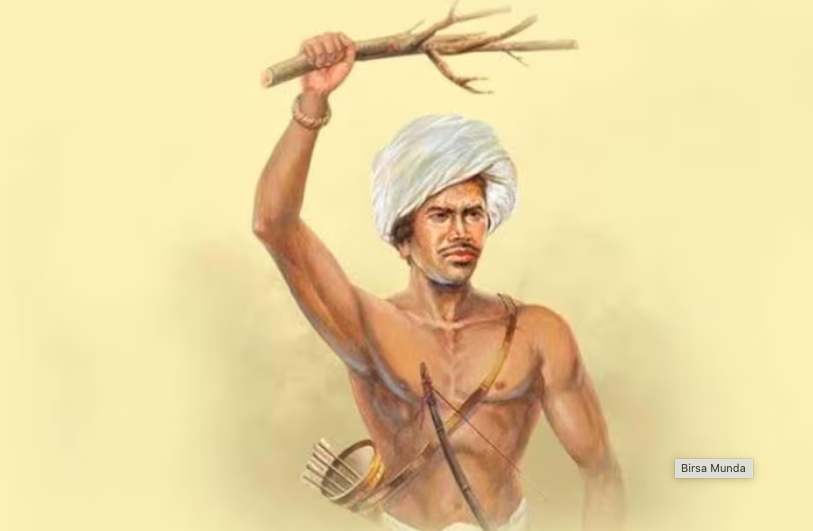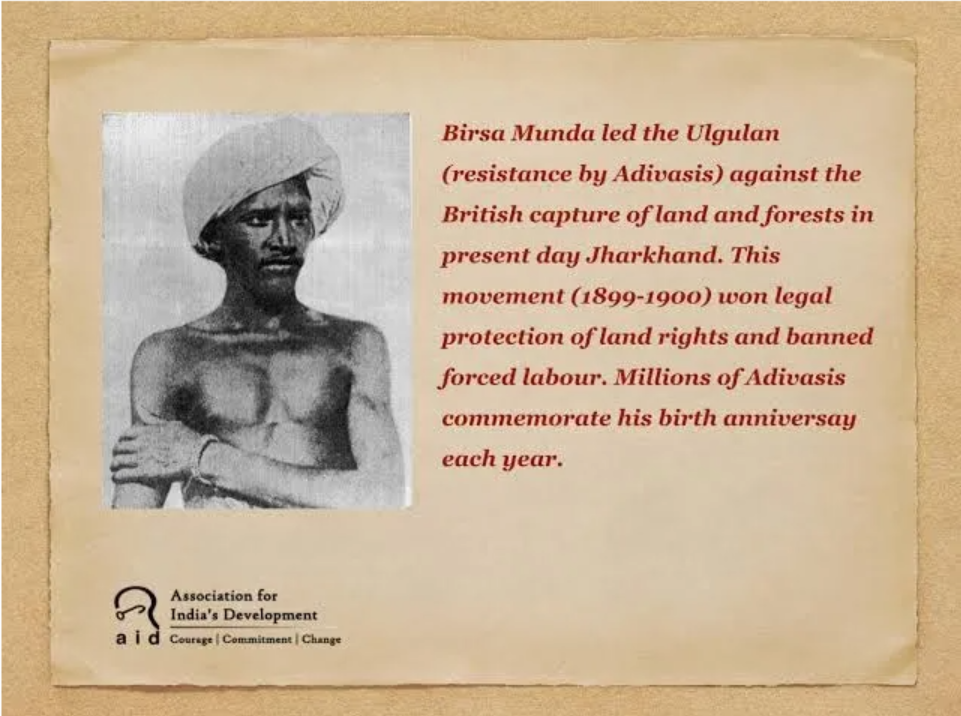15 November 2024 : Indian Express Editorial Analysis
1. Birsa Munda lives on
(Source: Indian Express; Section: The Editorial Page; Page: 12)
| Topic: GS1 – History |
| Context: |
| The article celebrates the legacy of Bhagwan Birsa Munda, highlighting his role in India’s fight against colonial oppression and the ongoing recognition of tribal contributions to the nation’s history and values. |

Honoring India’s Heroes
- Throughout Indian history, numerous heroes have emerged, embodying the spirit of the nation and contributing to its rich cultural legacy.
- These figures have guided the nation’s moral and social values, just as the stars of the Saptarshi constellation guide travelers.
- Among them, Bhagwan Birsa Munda stands as a remarkable example of resilience and courage, whose legacy is celebrated today.
A Tribute to Bhagwan Birsa Munda
- As India commemorates the 150th anniversary of Birsa Munda’s birth, citizens reflect on his profound impact.
- His story, passed down through generations, is a source of pride for those who hear it.
- From a young age, stories of Munda’s resistance and dedication to justice inspired a deep sense of connection to his ideals.
Early Life and Resistance Against Colonial Exploitation
- Born in Ulihatu, Jharkhand, Birsa Munda’s brief life (he lived to only 25 years) was marked by fierce opposition to British colonial rule and exploitation.
- In the face of British authorities and landlords who were dispossessing and oppressing tribal communities, Munda rose as a leader of the people.
- He led the “Ulgulan” or Munda Rebellion, advocating for justice and tribal rights, earning the title “Dharti Aba” or “Father of the Earth” among his followers.
Ulgulan: A Fight for Justice and Cultural Identity

- The Munda Rebellion, or Ulgulan, was not only a fight for land but also a movement for cultural identity.
- Like Mahatma Gandhi, Birsa Munda combined a quest for justice with respect for traditional values.
- He asserted the tribal people’s rights over their lands, along with the importance of preserving their unique customs.
- His vision sought a balanced existence, intertwining justice with cultural pride.
Birsa Munda’s Compassion and Healing Touch
- Birsa Munda was known for his compassion and healing abilities, which became part of his identity.
- Trained as a healer, he was often sought by people needing medical help. Villagers believed in his healing touch, and he would frequently visit the sick, caring for them with dedication.
- His compassion symbolized the deep empathy present within tribal societies.
Recognizing Tribal Heroes and Their Contributions
- In earlier years, Birsa Munda and other tribal leaders were relatively unknown in mainstream Indian history.
- However, initiatives such as “Azadi ka Amrit Mahotsav” have raised awareness of their contributions. In 2021, the government established “Janjatiya Gaurav Divas” on Birsa Munda’s birth anniversary to honor the sacrifices and achievements of tribal freedom fighters.
- This recognition brings tribal histories, which have often been overlooked, to the forefront.
Lessons in Environmental Conservation from Tribal Societies
- The legacy of Bhagwan Birsa Munda and tribal communities holds valuable lessons for contemporary society, especially regarding environmental conservation.
- Tribal societies have a longstanding tradition of living harmoniously with nature, showing deep respect for the earth and its resources.
- Their sustainable practices and collective mindset offer insights into building a future that values ecological balance.
Government Initiatives to Support Tribal Development
- To continue Birsa Munda’s vision, the Indian government has implemented several welfare schemes aimed at the holistic development of tribal communities.
- The Dharti Aaba Janjatiya Gram Utkarsh Abhiyan, launched recently, aims to improve infrastructure in tribal areas, and the Pradhan Mantri Janjati Adivasi Nyaya Maha Abhiyan focuses on effective welfare initiatives.
- These efforts are part of a broader governmental recognition of the role of tribal communities in Indian society.
Conclusion: A Tribute to Bhagwan Birsa Munda’s Legacy
- Celebrating the 150th anniversary of Bhagwan Birsa Munda’s birth is a reminder of his enduring impact on India’s identity and values.
- His dedication to freedom, justice, and dignity resonates with people across India, especially its youth, who see in him a model of courage and pride.
- His legacy reminds us of the importance of justice, identity, and unity in building a nation where all communities can thrive.
| Significance of the Munda Rebellion |
|
|
PYQ: With reference to the history of India, “Ulgulan” or the Great Tumult is the description of which of the following events? (2020) (a) The Revolt of 1857 (b) The Mappila Rebellion of 1921 (c) The Indigo Revolt of 1859-60 (d) BirsaMunda’s Revolt of 1899-1900 Ans: d |
| Practice Question: Discuss the significance of Bhagwan Birsa Munda’s contributions to India’s freedom struggle and the role of tribal movements in shaping India’s socio-political landscape. How has recent recognition of tribal heroes influenced the nation’s approach to tribal welfare and conservation? (250 words/15 m) |


